Bezel gestures for touch displays are described. In at least some embodiments, the bezel of a device is used to extend functionality that is accessible through the use of so-called bezel gestures. In at least some embodiments, off-screen motion can be used, by virtue of the bezel, to create screen input through a bezel gesture. Bezel gestures can include single-finger bezel gestures, multiple-finger/same-hand bezel gestures, and/or multiple-finger, different-hand bezel gestures.
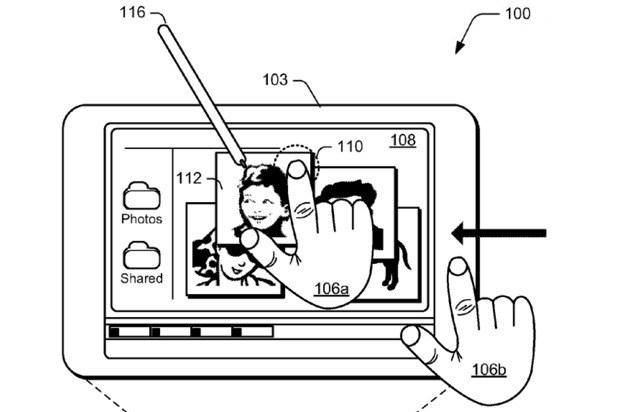
Embodiments of a multi-screen dual tap gesture are described. In various embodiments, a first tap input to a displayed object is recognized at a first screen of a multi-screen system. A second tap input to the displayed object is recognized at a second screen of the multi-screen system, and the second tap input is recognized approximately when the first tap input is recognized. A dual tap gesture can then be determined from the recognized first and second tap inputs.
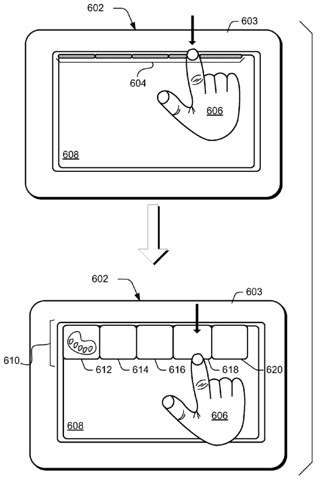
MULTI-SCREEN PINCH AND EXPAND GESTURES
Embodiments of multi-screen pinch and expand gestures are described. In various embodiments, a first input is recognized at a first screen of a multi-screen system, and the first input includes a first motion input. A second input is recognized at a second screen of the multi-screen system, and the second input includes a second motion input. A pinch gesture or an expand gesture can then be determined from the first and second motion inputs that are associated with the recognized first and second inputs.
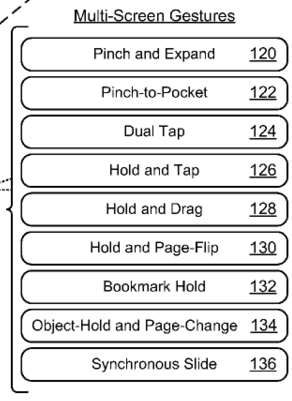
MULTI-SCREEN BOOKMARK HOLD GESTURE
Embodiments of a multi-screen bookmark hold gesture are described. In various embodiments, a hold input is recognized at a first screen of a multi-screen system, and the hold input is recognized when held in place proximate an edge of a journal page that is displayed on the first screen. A motion input is recognized at a second screen of the multi-screen system while the hold input remains held in place. A bookmark hold gesture can then be determined from the recognized hold and motion inputs, and the bookmark hold gesture is effective to bookmark the journal page at a location of the hold input on the first screen.
MULTI-SCREEN HOLD AND PAGE-FLIP GESTURE
Embodiments of a multi-screen hold and page-flip gesture are described. In various embodiments, a hold input is recognized at a first screen of a multi-screen system, and the hold input is recognized when held to select a journal page that is displayed on the first screen. A motion input is recognized at a second screen of the multi-screen system, and the motion input is recognized while the hold input remains held in place. A hold and page-flip gesture can then be determined from the recognized hold and motion inputs, and the hold and page-flip gesture is effective to maintain the display of the journal page while one or more additional journal pages are flipped for display on the second screen.
MULTI-SCREEN HOLD AND TAP GESTURE
Embodiments of a multi-screen hold and tap gesture are described. In various embodiments, a hold input is recognized at a first screen of a multi-screen system, and the hold input is recognized when held to select a displayed object on the first screen. A tap input is recognized at a second screen of the multi-screen system, and the tap input is recognized when the displayed object continues being selected. A hold and tap gesture can then be determined from the recognized hold and tap inputs.
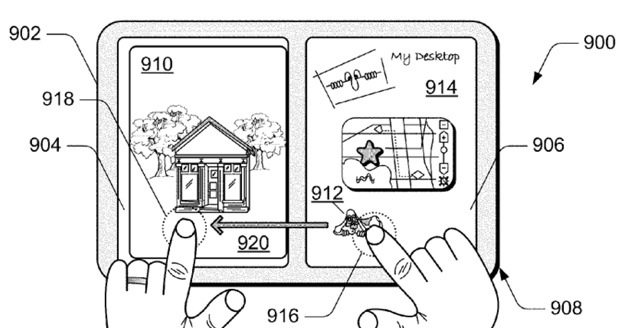
Bezel gestures for touch displays are described. In at least some embodiments, the bezel of a device is used to extend functionality that is accessible through the use of so-called bezel gestures. In at least some embodiments, off-screen motion can be used, by virtue of the bezel, to create screen input through a bezel gesture. Bezel gestures can include single-finger bezel gestures, multiple-finger/same-hand bezel gestures, and/or multiple-finger, different-hand bezel gestures.
RADIAL MENUS WITH BEZEL GESTURES
Bezel gestures for touch displays are described. In at least some embodiments, the bezel of a device is used to extend functionality that is accessible through the use of so-called bezel gestures. In at least some embodiments, off-screen motion can be used, by virtue of the bezel, to create screen input through a bezel gesture. Bezel gestures can include single-finger bezel gestures, multiple-finger/same-hand bezel gestures, and/or multiple-finger, different-hand bezel gestures.
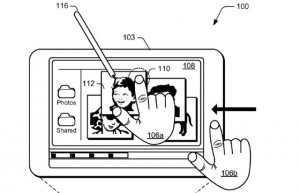
 Follow
Follow